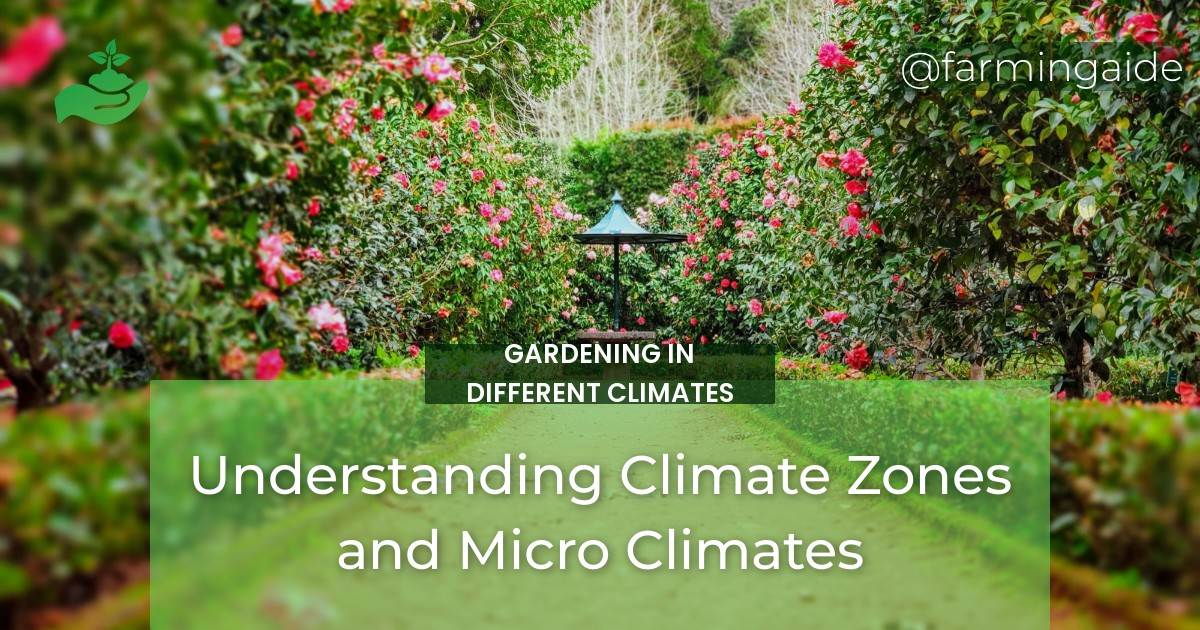Welcome to our comprehensive article on understanding climate zones and micro climates in urban farming. As an expert in both SEO and the urban farming and horticulture industry, I am excited to share my knowledge on this important topic. In this article, we will define climate zones and micro climates, discuss their impact on urban farming, and explore strategies for successful plant selection, soil management, pest and disease control, and sustainable gardening practices in different climate zones. By the end of this article, you will have a thorough understanding of how climate zones and micro climates play a crucial role in the success and sustainability of urban farming.
Definition of Climate Zones
Climate zones refer to areas of the Earth that share similar weather patterns and temperatures. These zones are determined by factors such as latitude, elevation, and proximity to bodies of water. Understanding climate zones is essential in urban farming as it helps farmers choose the right plants and cultivation techniques for their specific area. Some examples of climate zones include tropical, temperate, and arid climates.
Importance of Understanding Climate Zones in Urban Farming
The climate has a significant impact on plant growth and health. Different plants thrive in different climate zones, and understanding this is crucial for successful urban farming. Climate also plays a role in crop selection and yield, as certain plants may not be suitable for certain climate zones. Additionally, urban farming in different climate zones presents unique challenges that must be addressed for successful cultivation.
Micro Climates
Micro climates are small areas within a larger climate zone that have their own unique weather patterns and temperatures. These micro climates can be found in urban areas due to factors such as buildings, pavement, and green spaces. It is important to identify micro climates in urban farming as they can have a significant impact on plant growth and health.
While climate zones refer to larger areas, micro climates can vary within a single climate zone. For example, a city may have a temperate climate zone, but certain areas within the city may have micro climates that are more suitable for tropical plants.
Plant Selection and Cultivation in Different Climate Zones
When selecting plants for urban farming, it is essential to consider the climate zone in which they will be grown. Factors such as temperature, humidity, and sunlight must be taken into account. Techniques for adjusting cultivation practices, such as using shade structures or irrigation systems, may also be necessary in different climate zones. Case studies of successful plant selection and cultivation in various climate zones can provide valuable insights for urban farmers.
Soil Management and Composting in Different Climate Zones
The climate also has a significant impact on soil health and composition. Different climate zones may have varying levels of moisture, nutrients, and pH levels in the soil. Strategies for managing soil in different climate zones may include adding organic matter, adjusting pH levels, and using cover crops. Composting is also an essential practice in urban farming, and techniques may vary depending on the climate zone.
ALSO READ
Pest and Disease Control in Different Climate Zones
Climate can also affect the prevalence of pests and diseases in urban farming. Different climate zones may have different common pests and diseases, and the climate can also impact the severity of outbreaks. Strategies for preventing and controlling pests and diseases may include using natural predators, crop rotation, and proper sanitation practices. Case studies of successful pest and disease control in various climate zones can provide valuable insights for urban farmers.
Sustainable Gardening Practices in Different Climate Zones
Sustainability is a crucial aspect of urban farming, and it is essential to incorporate sustainable practices in different climate zones. This may include using organic methods, conserving water, and promoting biodiversity. Sustainable gardening practices have numerous benefits, such as reducing environmental impact and promoting healthy soil and plants. Examples of successful sustainable gardening practices in various climate zones can provide inspiration for urban farmers.
Seasonal Planning and Crop Rotation in Different Climate Zones
Seasonal planning and crop rotation are essential practices in urban farming, and they must be adjusted for different climate zones. Seasonal planning involves selecting crops that are suitable for the specific climate and time of year. Crop rotation helps maintain soil health and prevent pest and disease outbreaks. Techniques for planning and rotating crops may vary depending on the climate zone, and case studies can provide valuable insights for urban farmers.
How Does Understanding Climate Zones and Micro Climates Impact Soil Testing for Gardening Success?
Understanding climate zones and microclimates is essential for using soil testing tools for gardening effectively. Different climates affect soil composition and fertility, which directly impacts plant growth. By analyzing soil conditions using appropriate soil testing tools for gardening, gardeners can better adapt to specific climate zones and microclimates to achieve gardening success.
Conclusion
In conclusion, understanding climate zones and micro climates is crucial for successful and sustainable urban farming. By considering the climate when selecting plants, managing soil, controlling pests and diseases, and implementing sustainable practices, urban farmers can overcome the unique challenges presented by different climate zones. With the knowledge gained from this article, urban farmers can create thriving and sustainable gardens in any climate zone.
RELATED ARTICLES:


